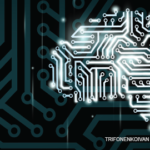“To err is human.”
—Alexander Pope (1688–1744)
The Wisest Minds in Medicine
At some point during our careers, we have the privilege of meeting a physician so talented that everyone else pales in comparison. These are those gifted clinicians whose astonishing mastery of medicine makes everyone in their midst feel like inept, babbling fools. They carefully parse the details of case presentations seeking those critical clues that others may have overlooked. Their thinking is in perpetual motion, identifying the pertinent issues and carefully constructing reasoned arguments that support their diagnoses. On a moment’s notice, they can highlight the distinctions between sarcoidosis and Blau’s syndrome or provide a meticulous dissertation on the histopathology of Libman-Sacks endocarditis.
Their physical examination skills are exceptional, too. Surrounded by a bevy of eager learners gathered around the patient’s bedside, they can demonstrate how to palpate a congested spleen’s tip and in a majestic tour de force confirm the anticipated dullness to percussion over Traube’s space, that elusive, crescent-shaped patch of abdominal wall that can shield the enlarged spleen from discovery.
As a trainee, I found it a treat to observe these mentors in their glory, splendidly steering the audience through a complicated case presentation, culminating in a magnificent discussion of its causation and its management.
These teaching vignettes were among the major reasons why many of us chose medicine.
Some of these luminaries have been recognized around the world, perhaps none achieving the status of the inimitable Sir William Osler. There have been others, including Osler’s biographer, the noted neurosurgeon, Harvey Cushing, MD, and the grand masters of internal medicine, Paul Beeson, MD, and Russell Cecil, MD, whose efforts in creating vibrant textbooks shaped the teaching of medicine for generations of students. Of course, there were the notable clinicians residing in every medical community who could always be relied on to provide sage advice to their colleagues.
The constant pressure of having to efficiently diagnose & manage four to five patients every hour makes one look back with envy at the slow-paced, genteel approach of the past.
During those halcyon days of medicine, the pace was slower, the hospital length of stay was longer, the clinic schedules were lighter, and the interruptions in our daily routines were fewer. We had time to think, to carefully chew on the facts of a case. Slow cooking. We spent time in our local medical libraries, where we carefully perused leather-bound volumes in search of papers that enlightened our understanding of an illness. We would even call a halt to all clinical activities so we could attend grand rounds or journal club.
Needless to say, this starry-eyed view of medicine is long extinct. Nowadays, your hospitalized patient may have been discharged before you complete your admission note. Your packed clinic schedule continues to defy the laws of physics regarding bodies occupying the same space at the same time. You are constantly stressed by the barrage of diktats imposed by insurers and bureaucrats. Who has time to percuss Traube’s space or to carefully palpate a knee in search of an evanescent fluid bulge? With surveys reporting that the average office visit runs somewhere between 13 and 16 minutes in length, there isn’t much time to play the role of an inquisitive Sir William Osler.1 (In fact, Osler was far from perfect: He seemed to have little patience for arthritic patients, having been quoted as saying that he would head out the back door when they arrived through the front door.2) The constant pressure of having to efficiently diagnose and manage four to five patients every hour makes one look back with envy at the slow-paced, genteel approach of the past. Help!
My Dear Watson

The promise of AI is such that in the future, we may be able to enter data into a system and in seconds, the correct diagnosis and optimal treatment plan would be displayed.
enzozo/shutterstock.com
Millions of scientific articles have migrated online from book-filled libraries. Journals and textbooks have established a presence on the Internet, too, along with evidence-based clinical support resources that are usually restricted to paid subscribers. For the nonpaying customer, there is always Wikipedia or simply googling a term. The information may be free, but its veracity can be spotty.3 Millennials are often drawn to social media sites, so, not surprisingly, many have been attracted to crowdsourcing as a way of reaching a consensus regarding a challenging diagnosis (see “Can DIY Medicine Tame Rampaging Healthcare Costs?” The Rheumatologist, April 2015). But most of these resources require the user to have some medical literacy to better navigate the maze of information.
What lies ahead may make our present medical diagnostics practices seem quaint. In the future, we—or an assistant or a patient—may be able to simply enter some data into a system and in minutes, if not seconds, the correct diagnosis and optimal treatment plan would be displayed. Such a promising development relies on the rapid advances being made in the field of artificial intelligence (AI), known as cognitive computing technology. There are several competitors but the most advanced may be IBM’s Watson.
The story behind Watson’s development dates back to 1997, when scientists created the chess-playing computer known as Deep Blue, which defeated the then-reigning world champion, Garry Kasparov, in a six-game match. This was an amazing feat: Machine beat man in a game of cognition. Great interest in advancing the technology ensued. However, at the time, there were limits on AI’s ability to create smart computers that could mimic human thought processes. As the story goes, years later, an IBM executive, Charles Lickel, was having dinner at a steakhouse in Poughkeepsie, N.Y., when he noticed that the tables around him had suddenly emptied out. Instead of finishing their sirloins, his fellow diners had rushed to the bar to watch the game show, Jeopardy! This was deep into the winningest contestant’s, Ken Jennings’s, 74-game winning streak, and the crowd around the TV was rapt.
Not long afterward, Mr. Lickel attended a brainstorming session in which participants were asked to come up with IBM’s next challenge, and he suggested that they take on Mr. Jennings.4 This was not an easy task, because human reasoning, learning and inference make up one of the most sophisticated thinking systems in existence. Although computers were capable of providing quick answers to straightforward questions, they were completely flummoxed by some of those being posed to Jeopardy contestants:
“In 1984, his grandson succeeded his daughter to become his country’s prime minister.” A person can quickly grasp that the clue points to the patriarch of a political family and, with luck, summon up, “Who is Nehru?” For a computer, the sentence is a quagmire. Is what’s being sought a name? If so, is it the name of the grandson, the daughter or the prime minister? Or is the question about geography or history?5,6
Nonetheless, Watson dominated the series of matches, handily winning more money than its two opponents combined. Flush with victory, Watson’s career took an interesting turn into medicine. Over the past few years, it was enrolled in an accelerated AI project, working with scientists and clinicians at the Cleveland Clinic in Ohio, Memorial Sloan Kettering Cancer Institute in New York City, the University of Maryland in Baltimore and Baylor College of Medicine in Houston, rapidly acquiring medical knowledge at the incredible clip of up to 60 million pages of text per second, even when that text was in the form of plain old prose, or what scientists call natural language.7
Watson’s strength is its ability to analyze and comprehend massive reams of data and then apply this information to find the needles in the haystack. This mastery has captured the attention of the biopharmaceutical industry. For example, Watson was challenged by several oncologists at Baylor to predict which kinases could phosphorylase the p53 protein, a critical element for cancer drug discovery. Provided with a set of human kinases that can phosphorylate p53, Watson used text mining to read all, yes all, known papers on the topic of kinases and, in a few weeks, identified two new kinases that possessed this capability.8 In another exercise, Watson identified 15 drug candidates that could be repurposed to treat malaria. Similarly, this project took less than one month while it required 10 scientists to spend more than 14 months to identify a similar number of drug candidates.8
Watson shows promise in other medical fields. Having been fed an astounding 30 billion images to store, it has acquired a deep understanding of radiology. Watson can identify a pulmonary embolism on computed tomography imaging of the chest or abnormal wall motion on echocardiography. Reading radiographs and magnetic resonance imaging is elementary for Watson. It is also making waves in pathology, because its abilities to download an unlimited number of images make it adept at detecting cancerous cells or many other unusual histologic findings that a tired technician battling fatigue may overlook.
The rapid progress in AI achieved in the past few years is equally exciting and terrifying to clinicians and researchers. Algorithm-based software programs can reliably perform a variety of tasks that were once time consuming and prone to error. The ability to accurately parse through gigabytes of data in seconds opens many new frontiers, but creates some new stresses. Just as robots are replacing factory workers on assembly lines, shouldn’t scientists be wary of the advancing army of AI devices that have the capability of replacing them in the lab or the clinic? One day, will Watson or some similar AI device put us all out of work?
The Pigeon Will See You Now
Fear not just the robot. For pathologists and radiologists, another terror lurks in the skies. Pigeons. Yes, pigeons—those unadorned birds of flight whose notoriety for plastering parked cars with their poop have made them a public enemy in some quarters—have some wondrous analytical skills. Seriously, pigeons carry an illustrious scientific pedigree. As one of Charles Darwin’s favorite species, Columba livia, they played a critical role in the formulation of his theories about evolution in On the Origins of Species.9 Their skills as homing pigeons have been put to good use in times of battle. During World War II, in the days before satellites and global positioning tracking devices, pigeons were routinely carried by Royal Air Force bombers in case of a crash. They would then be released with the hope that they could fly home to their loft at an air base and alert others to the crew’s predicament.10
Trained pigeons are prodigious discriminators of complex visual stimuli. Capable of recalling more than 1,800 images, they are able to differentiate between letters of the alphabet, emotional expressions on human faces and even paintings by Monet or Picasso. They can generalize their discrimination performance to novel objects or scenes.11 A very clever study recently tested whether operant conditioning procedures alone, without the availability of verbal instructions, could prove sufficient for teaching pigeons the intricate visual discrimination skills associated with diagnosing medically relevant images.
Deploying a system in which pigeons were rewarded with food pellets for pecking at the correct image, the investigators found that not only could they train pigeons to distinguish histopathology slides of benign from malignant breast tissue specimens, but the pigeons also successfully sorted through mammograms and identified those with microcalcifications that were indicative of tumors.11
Stunning results. Who would ever have guessed? Interestingly, the researchers found that, to maintain the pigeons’ finely honed clinical skills, they needed to be kept lean, weighing just below their free feeding weight. I think the accreditors of graduate medical education would frown if we tried to extrapolate from these data!
Caring & Concern
Perhaps it’s a relief not to be one of those higher-paid specialists, such as a radiologist or pathologist. Let’s stick to rheumatology, in which part of our “payment” comes in the form of our patients’ gratitude for a job reasonably well done. Our empathy and understanding of their burden of living with a chronic disease are traits that neither pigeon nor robot can emulate. No devised set of algorithms will succeed in understanding these critical human concepts of caring and concern.
And as for having pigeons accompany us in the office, they will first need to work on some personal hygiene issues. Just a suggestion …
 Simon M. Helfgott, MD, is associate professor of medicine in the Division of Rheumatology, Immunology and Allergy at Harvard Medical School in Boston.
Simon M. Helfgott, MD, is associate professor of medicine in the Division of Rheumatology, Immunology and Allergy at Harvard Medical School in Boston.
References
- Brodwin E, Radovanovic D. Here’s how many minutes the average doctor actually spends with each patient. Business Insider. 2016 Apr 6.
- O’Dell JR, Mikels TR. To improve outcomes we must define and measure them: Toward defining remission in rheumatoid arthritis. Arthritis Rheum. 2011 Mar;63(3):587–589.
- Systemic lupus erythematosus. Wikipedia.
- Kolbert E. Books: Our automated future. The New Yorker. 2016 Dec 19 & 26.
- Baker S. Final Jeopardy: The Story of Watson, the Computer That Will Transform Our World. Houghton Mifflin Harcourt: New York, 2011.
- IBM’s Watson computer plays Jeopardy.
- Cohn J. The robot will see you now. The Atlantic. 2013 Mar.
- Chen Y, Argentinis E, Weber G. IBM Watson: How cognitive computing can be applied to big data challenges in life sciences research. Clin Ther. 2016 Apr;38(4):688–670.
- Bodio SJ. Darwin’s other bird—the domestic pigeon. The Cornell Lab of Ornithology. 2009 Jul 15.
- Sleight C. The pigeon that saved a World War II bombing crew. BBC News. 2012 Feb 23.
- Levenson RM, Krupinski EA, Navarro VM, et al. Pigeons (Columba livia) as trainable observers of pathology and radiology breast cancer images. PLoS One. 2015 Nov 18;10(11):e0141357.

